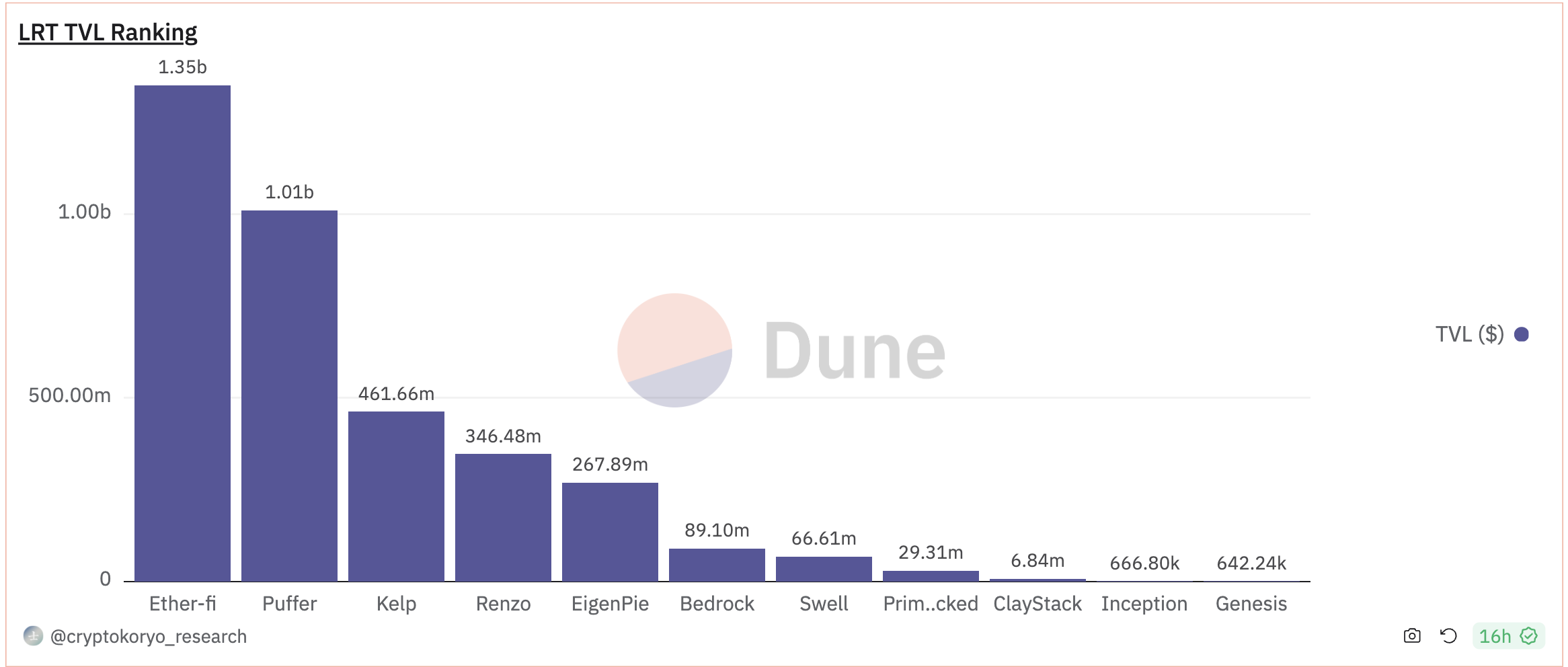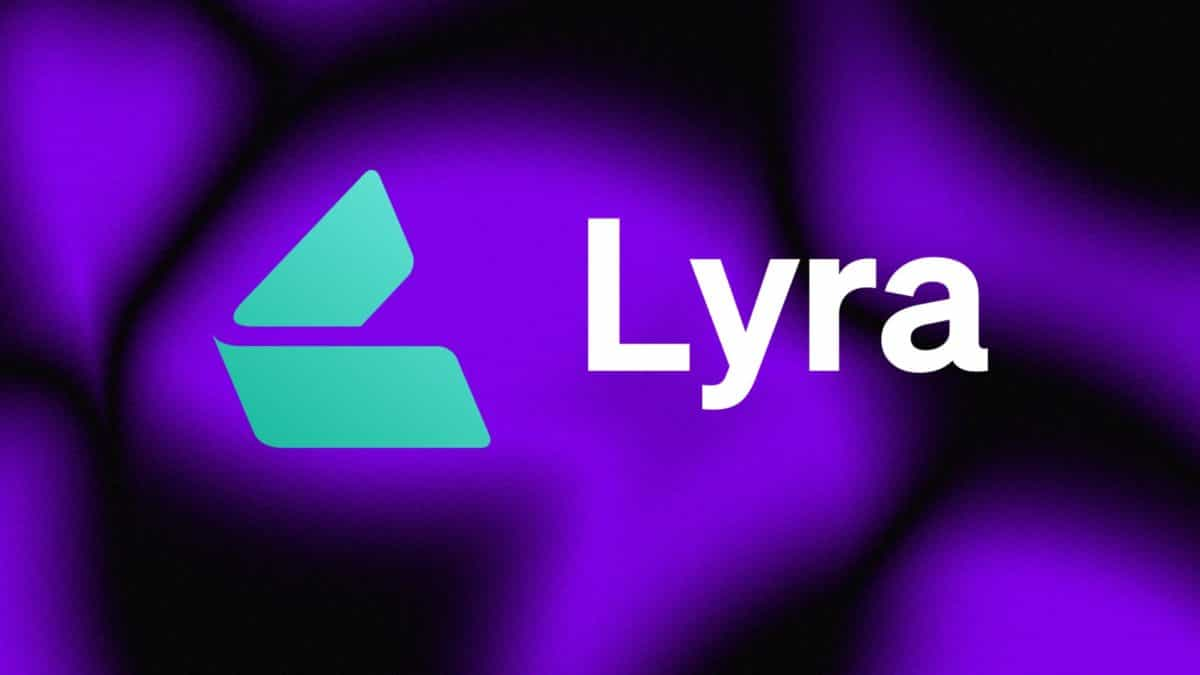Liquid restaking tokens surge past $3.5 billion in total value locked

Quick Take
- The total value locked in liquid restaking tokens now exceeds $3.5 billion.
- Protocols like Etherfi, Renzo, Kelp, Puffer and Bedrock have seen a significant rise in deposits.

The total value locked in liquid restaking tolens has surpassed $3.5 billion, indicating the niche’s growing interest among Ethereum investors.
Protocols such as Etherfi, Renzo, Kelp, Puffer and others have seen an increase in deposits over the last month. This increase is due to users opting to utilize EigenLayer through these platforms, which allows them to maintain access to their funds.
Etherfi has the highest TVL among these LRTs, exceeding $1.3 billion. Kelp has over $460 million in user deposits, while Renzo has a TVL of $346 million.
Puffer, the latest addition to the LRT landscape, recently saw a rapid increase in deposits, reaching the billion-dollar mark shortly after its launch. Other smaller LRT protocols include Bedrock with a TVL of $89 million, Swell at $66 million, Prime at $29 million and ClayStack at $6.8 million.
Liquid restaking allows liquid-staking token holders to stake their tokens on EigenLayer, thereby contributing to its economic security. This is distinct from traditional liquid staking, which involves staking assets through a staking service provider and receiving receipt tokens in return.
EigenLayer’s contribution to the growth in TVL of these protocols is noteworthy. It lets users deposit and “restake” ether from various liquid staking tokens.

Liquid restaking protocols ranked by TVL | Source: Dune (via cryptokoryo)
EigenLayer restaking allows Ethereum validators to use their ether stakes to secure other protocols. The objective is to use these funds to enhance the security of third-party networks. The total value locked in EigenLayer now exceeds $7 billion.
While the restaking period for deposits on EigenLayer through liquid staking tokens was temporarily opened recently, it has now closed. This is where LRTs come in — offering users a method for depositing funds on Eigen when caps are largely reached. This is because "native restaking," which is done directly on EigenLayer from ether validator stakes, remains without a cap.
As a result, LRT protocols — such as EtherFi, Renzo and Kelp — continue to accept ether deposits, restake these on behalf of users and return a derivative token along with a commitment to distribute points received from Eigen.
Disclaimer: The Block is an independent media outlet that delivers news, research, and data. As of November 2023, Foresight Ventures is a majority investor of The Block. Foresight Ventures invests in other companies in the crypto space. Crypto exchange Bitget is an anchor LP for Foresight Ventures. The Block continues to operate independently to deliver objective, impactful, and timely information about the crypto industry. Here are our current financial disclosures.
© 2023 The Block. All Rights Reserved. This article is provided for informational purposes only. It is not offered or intended to be used as legal, tax, investment, financial, or other advice.



